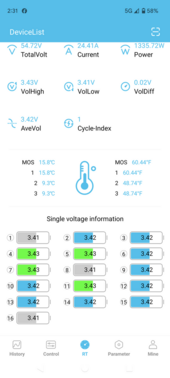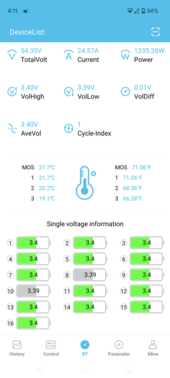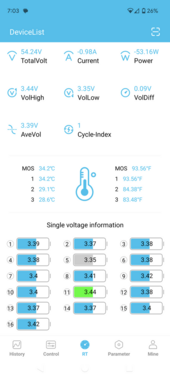GXMnow
Solar Wizard
- Joined
- Jul 17, 2020
- Messages
- 2,713
Sorry, that was me, I got it mixed up with another thread I was helping on.I think there is a misunderstanding. I only have a single 100ah 48 battery.
Even with one battery, I would hope it's output drops less than 4 volts at 100 amps. That would be 40 milliohms of total series resistance. And we calculated your 1,800 watt load should be less than 40 amps on a 48 volt system.
The ad does claim it has bluetooth monitoring. Is there a QR code anywhere in the instructions or on the battery? My BMS units had a QR code that brought me to the App for my iPhone. If you can't find a Smilaxe app I would guess they are using the same BMS as the Chins battery, or even the Ography one shown on the same Amazon page you linked. I would try the other apps and see if they find the BMS. Those 3 batteries all look like the same case, just different colors and stickers.








